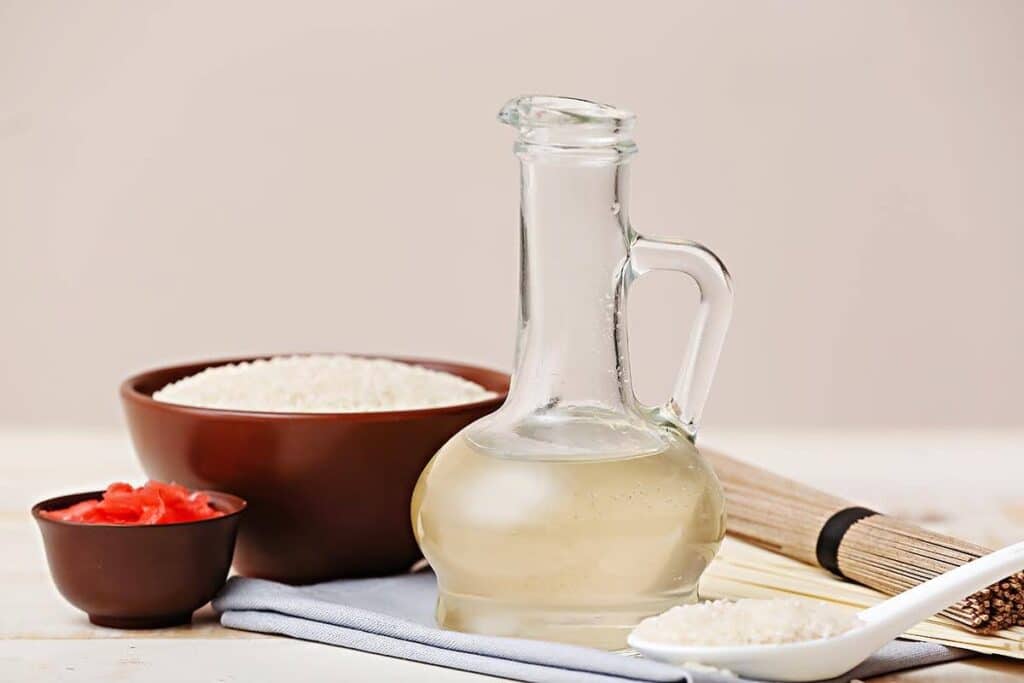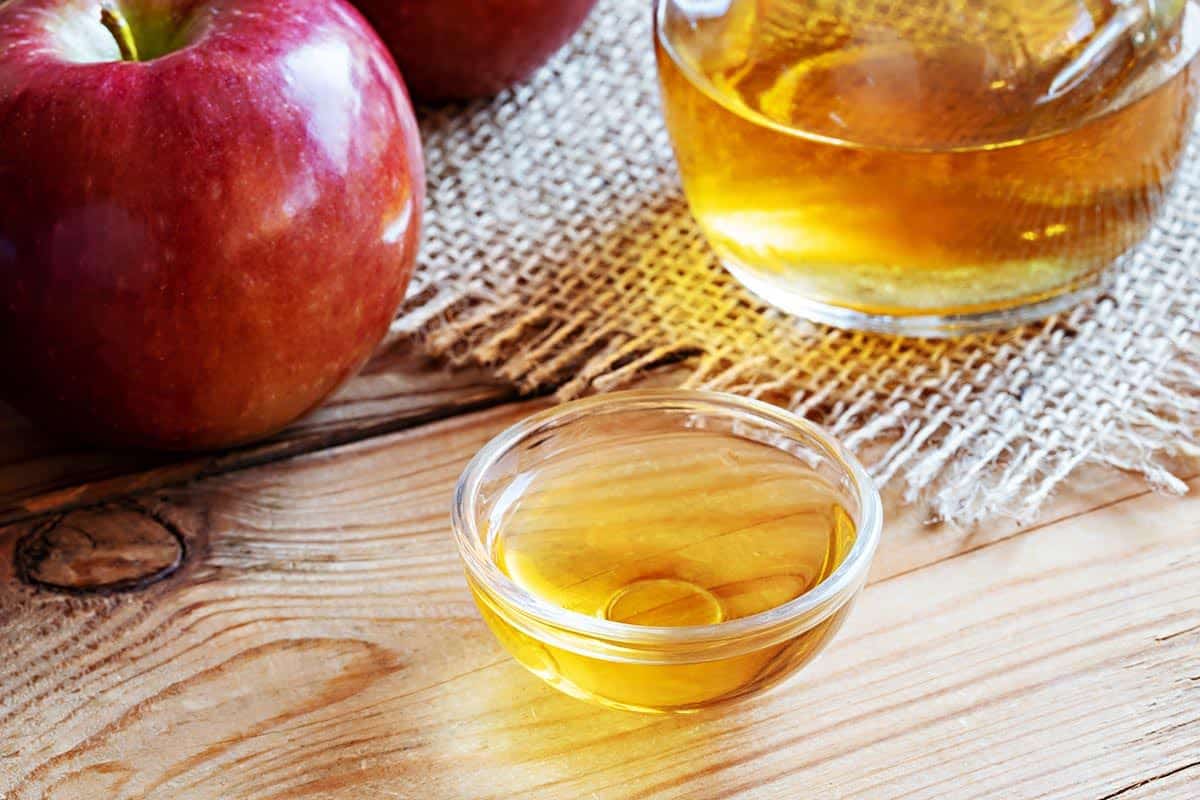What do you do if you don’t have sake but want to try cooking Japanese dishes? We’ve got you covered with alternatives you can use as a sake substitute.
If you enjoy Japanese cuisine, chances are you’re already familiar with sake. Aside from a cooking ingredient, it’s also a great pair with your meal.
You are watching: Sake Substitute (10 options You Can Use Instead).

What Is Sake?
Sake is Japanese alcoholic drink comes from fermented rice.
It is usually light in color and not carbonated. Because of its appearance and alcohol content, sake is often called a wine.
Sake can vary in flavor, aroma, and texture. The final result depends on factors such as the type of rice used, the brewing process, and the water source.
In Japanese cuisine, people most often use it as a seasoning. After all, sake is known for its ability to enhance and bring out flavors of other ingredients without overpowering them.
This beverage is also a great meat tenderizer.
Sake is most popular for its use in teriyaki sauce. People use it as a glaze for meats and vegetables, stir-fries, soups and dipping sauce.
Best Sake Substitutes
Whether you’re looking for a non-alcoholic alternative or a similar flavor profile, there are many different sake substitutes are available.
1. Rice Wine Vinegar

Rice wine vinegar is a great non-alcoholic substitute for sake.
It has the core flavors of sake. However, rice wine vinegar has a more pungent and acidic taste.
This substitute’s sweet and acidic flavor works well in salad dressings and sauces.
Choose unseasoned rice wine vinegar for the closest match to sake. Add sugar or honey to balance the taste if the recipe calls for sweetness.
Since rice wine vinegar has a stronger flavor than sake, it’s best to dilute it to get a closer sake taste.
Tips:
Use 1 tablespoon rice wine vinegar diluted in 3 tablespoons water to replace ¼ cup sake.
2. Chinese Rice Wine
Since sake is a Japanese rice wine, it makes sense that one of the best substitutes for it is Chinese rice wine.
Chinese rice wine, or mi jiu, is a famous cooking wine in Chinese cuisine.
Like sake, it is mostly clear in appearance. It has a balanced sweetness that is also very similar to sake. That said, it will not change the flavor profile of your dish.
Tips:
Because of the similarity in flavor, you can use the same amount of Chinese rice wine as the amount of sake called for in your recipes.
3. Dry Sherry

Dry sherry is a fortified wine with an alcohol content close to sake, making it a suitable replacement.
It has a nutty and slightly sweet flavor that can complement various dishes.
The difference in flavor is not noticeable, especially in recipes where you only need a small amount of sake.
This swap has a darker color which might affect the appearance of your final dish.
Tips:
Use a 1:1 ratio when substituting sake with dry sherry.
4. White Grape Juice
Like sake, white grape juice is also sweet. While it is not as sweet as sake, it is a great substitute, especially if you avoid an alcoholic ingredient.
Do note that white grape juice lacks the acidity of sake. In some dishes, though, the absence of acidity is welcome, especially if you already have other acidic ingredients.
Try it with marinades and sauces for the best results.
Tips:
Read more : Freeze Dried Jolly Rancher Cookies Recipe
Use a 1:1 ratio when using white grape juice to replace sake. If you need to add some acid to your recipe, use grape juice with some citrus juice. Lemon juice works best for this purpose.
5. Chinese Shaoxing Wine
Chinese Shaoxing wine is like a regular Chinese rice wine but with a deeper and more complex taste.
This substitute does not have the same transparent color. It has a darker hue, which can affect the appearance of your dish.
It’s also important to note that this swap has added salt.
Tips:
Opt for a 1:1 ratio when using this Chinese wine as a sake substitute.
6. Distilled White Vinegar
Distilled white vinegar has a strong, sour taste. It is very acidic, so it can greatly change the resulting dish.
Yet, it is still on this list of sake substitutes because it is highly accessible.
You probably have it in your pantry, so it is a quick swap when you’re in a pinch.
You may also opt to use some sugar or honey in addition to this vinegar for a more balanced flavor.
Tips:
It is best to start with a small amount of distilled white vinegar first. Add more in small increments as necessary to not overpower your dish.
7. Apple Cider

Apple cider has a sweet and sour taste far from sake’s flavor. That said, you should try it if you dislike how sake tastes.
This creative swap works well in recipes where sake is not the main ingredient.
Use it in marinades and sauces for the best substitution experience.
Tips:
If you can find an unfiltered apple cider, it is a better choice than regular ones. Use in a 1:1 ratio of apple cider to sake.
8. Vermouth
Vermouth is a fortified wine that is aromatized with various herbs, spices, and botanicals.
While it can add complexity and depth to certain dishes, it may not be an ideal substitute for sake due to its different taste.
However, in some recipes where the flavor profile of sake is not a primary focus, vermouth can be used as a potential substitute.
Opt for dry vermouth for a closer flavor match.
Tips:
Start with a small amount of vermouth to replace sake in your recipes.
9. Dry White Wine
White wine is one of the most accessible alcoholic beverages to get a hold of.
Sake and dry white wine (not sweet) have similar flavor profiles, but the sake is a little stronger.
Dry white wine also has acidity similar to sake and is best for marinades, sauces, and stir-fries.
Choose a dry white wine like Sauvignon Blanc or Pinot Grigio with a crisp but light flavor for the best results.
Tips:
Choose a dry white wine with a crisp but light flavor for the best results. Use in a 1:1 ratio as a substitute for sake.
10. Mirin
Mirin is a sweet Japanese rice wine often used in cooking. It can be used as a substitute for sake, particularly in recipes that call for both sweetness and acidity.
This substitute is sweeter and has a higher sugar content compared to sake. If sweetness is a concern, you can balance it by adding a touch of vinegar or citrus juice to counteract the sweetness while still maintaining the desired flavors.
Tips:
Read more : Sims 4 How to Stop Being a Werewolf (With & Without Cheats)
Start by using approximately 3/4 to 1/2 of the amount of sake called for in the recipe and adjust based on your taste preferences.
Best Substitute For Sake In Teriyaki Sauce
If you’re making teriyaki sauce but don’t have sake, you can use substitutes like sherry, mirin, or even chicken broth.
Sherry is a good option because this alcohol has a slightly sweet taste similar to sake.
Mirin, a Japanese cooking wine, is also identical to sake but is sweeter. So if you’re going for a teriyaki sauce on the sweeter side, this is a good choice.
Lastly, chicken broth is a good non-alcoholic swap, too. It will slightly change the flavor profile but still give a solid teriyaki flavor.
How To Choose Best Sake Substitute
Sake has a unique sweet taste that’s hard to replicate, but if you follow the steps below, you can find the best sake substitute to use.
Consider The Flavor Profile Of Your Dish
Knowing the taste you want to stand out in your dish will allow you to choose the best substitute for your recipes.
Although rice wine vinegar, Chinese rice wine, and dry sherry are all excellent options with a similar nutty and slightly sweet taste to sake, you still have to consider your dish.
If you plan to make a stir-fry, you should opt for Chinese rice wine. After all, people mainly use it for stir-fries.
Lastly, use a sweeter substitute, like white wine, if the dish is sweet.
Think About The Alcohol Content
Remember that although sake’s alcohol content is not too high, it is still an alcoholic ingredient.
However, if you’re okay with your dishes having alcohol, dry sherry, and dry white wine are good choices.
For non-alcoholic swaps, opt for apple cider or white vinegar.
Experiment and Adjust.
There is no one-size-fits-all sake substitute.
Feel free to experiment with replacements until you find the best for your taste or dish. You can even combine two or more ingredients.
Also, since sake substitutes don’t provide the exact flavor, be open to adjusting your recipe. Start with a small amount and make your way up until you achieve your desired flavor.
How to use Sake in Cooking
When using sake in cooking, it’s important to note that the alcohol content evaporates during the cooking process, leaving behind the distinct flavors of the rice wine.
Here are some common ways sake is used in culinary applications.
Marinades
Sake is frequently used as a key component in marinades for meats, seafood, and tofu. Its natural acidity helps tenderize proteins while imparting a mild sweetness and subtle umami flavor.
Sauces and Stir-Fries
Sake is a popular ingredient in Japanese sauces and stir-fries. Sake can be added to teriyaki sauce, soy-based sauces, or stir-fry sauces to enhance their taste.
Soups and Broths
It can be added to miso soup, hot pots, or seafood broths to enhance the overall umami and savory qualities.
Steaming and Poaching
Sake is often used in steaming or poaching liquids to infuse delicate flavors into ingredients. It helps retain moisture while imparting a subtle sweetness to the food being cooked.
Rice Dishes
Sake can be added to rice dishes like sushi rice or fried rice to enhance the flavors. It adds a mild acidity that balances the richness of the rice and complements the other ingredients.
Desserts
Sake can also be used in desserts, particularly in recipes that call for a touch of alcohol. It can be added to fruit compotes, sorbets, or even incorporated into cake batters to impart a unique flavor.
Related Questions
Summary
Sake is a well-loved Japanese alcoholic beverage people often use in cooking. It has a distinct, light, sweet flavor that is difficult to replicate. However, if you don’t have sake on hand, there are a few substitutes that you can use instead.
The best sake alternatives include rice wine vinegar, dry sherry, and dry white wine. Although these substitutes are close to the flavor of sake, there are still notable differences. With some experimentation, though, you can find a sake substitute that will work for your dish.
More Articles
- Rum Extract Substitutes
- Amaro Nonino Substitutes
- Baileys Irish Cream Substitutes
Source: https://gardencourte.com
Categories: Recipe

